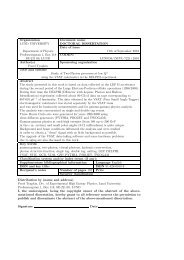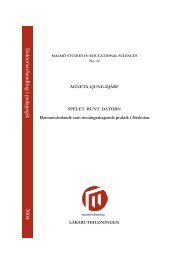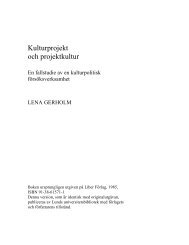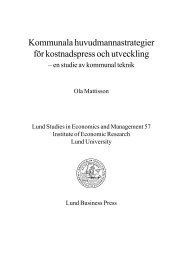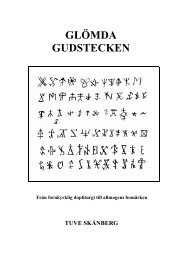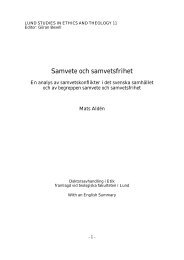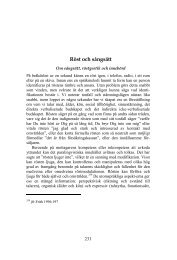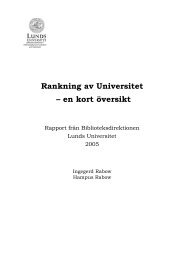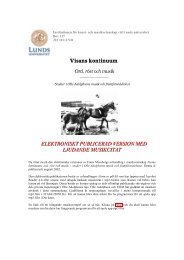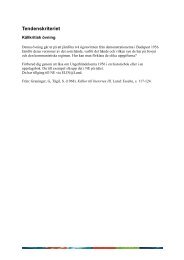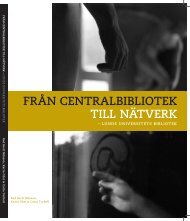Hyperpolarized Nuclei for NMR Imaging and Spectroscopy - Lunds ...
Hyperpolarized Nuclei for NMR Imaging and Spectroscopy - Lunds ...
Hyperpolarized Nuclei for NMR Imaging and Spectroscopy - Lunds ...
You also want an ePaper? Increase the reach of your titles
YUMPU automatically turns print PDFs into web optimized ePapers that Google loves.
educe the influence of B 0 inhomogeneities, which substantially can degrade<br />
the quality of EPI images.<br />
The trueFISP sequence (Oppelt et al. 1986) used in Paper II, <strong>and</strong> the fast<br />
low-angle shot (FLASH) sequences (Haase et al. 1986) used in Papers III<br />
<strong>and</strong> IV, had to be written from the start, mainly because of the nonst<strong>and</strong>ard<br />
triggering behavior imposed by the animal ventilator <strong>for</strong> hyperpolarized<br />
gas (see section 3.2). The FLASH sequence offered various options<br />
<strong>for</strong> segmented image acquisition (k-space data of one image could optionally<br />
be acquired during several consecutive inhalations of hyperpolarized gas), as<br />
well as online calculation of the gradient b-value ( s e e se c t i o n 5 .3 .2 , Eq . [ 28 ] ) .<br />
The trueFISP sequence included the options of using a RF preexcitation<br />
be<strong>for</strong>e the image acquisition, to rapidly reach a steady state of the magnetization,<br />
<strong>and</strong> a flip-back RF pulse after the image acquisition, which returned<br />
transverse magnetization to the longitudinal direction, thereby allowing the<br />
generation of several consecutive images with arbitrary time spacing (see<br />
Figure 7). This concept has been described by Scheffler et al. 2001.<br />
28<br />
trueFISP<br />
RF<br />
Read<br />
Slice<br />
Phase<br />
q<br />
2 +X<br />
q ±X<br />
TR loop<br />
Figure 7. Sketch of the trueFISP sequence used in Paper II. The gradient areas indicated<br />
by light <strong>and</strong> dark gray, respectively, have zero integrals.<br />
The sequence parameters of the imaging sequences used in Papers I–IV<br />
are summarized in Table 5.<br />
q –X<br />
q<br />
2 +X



